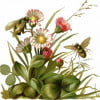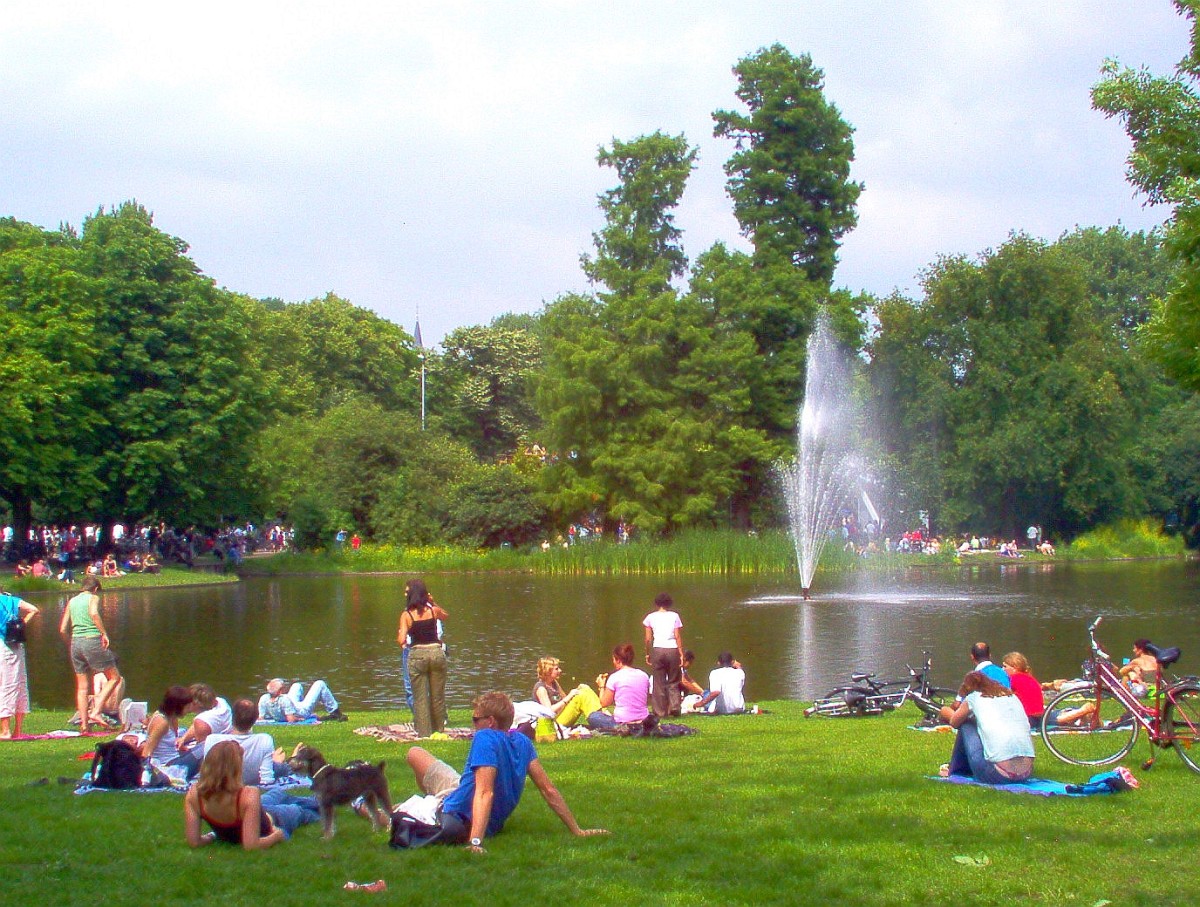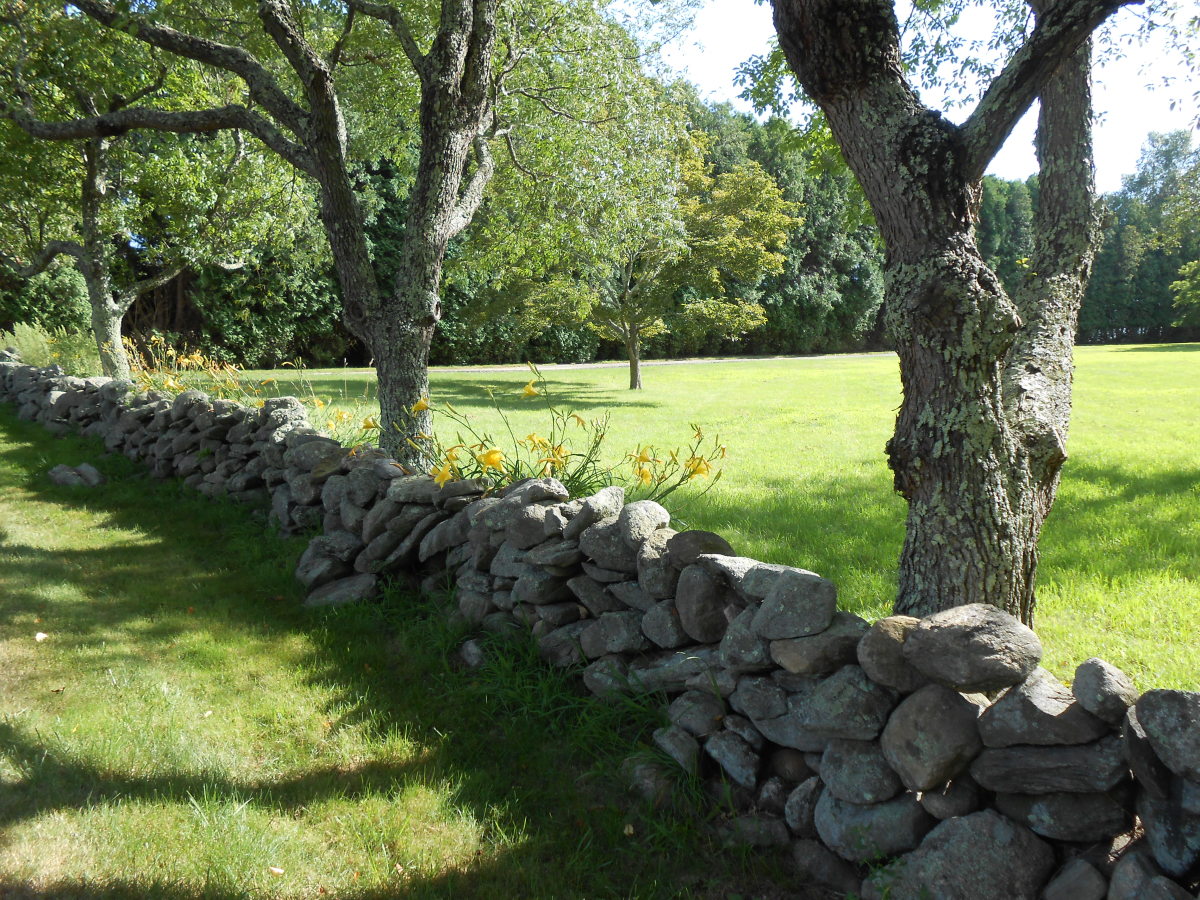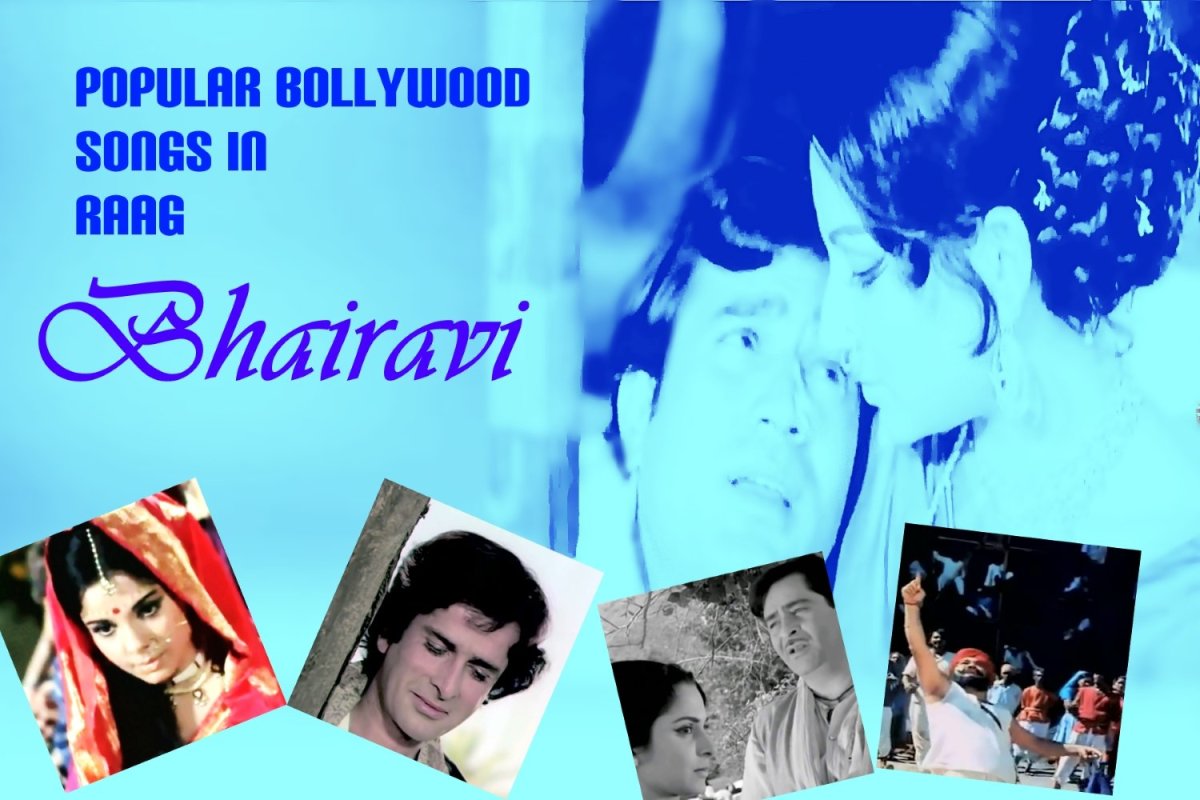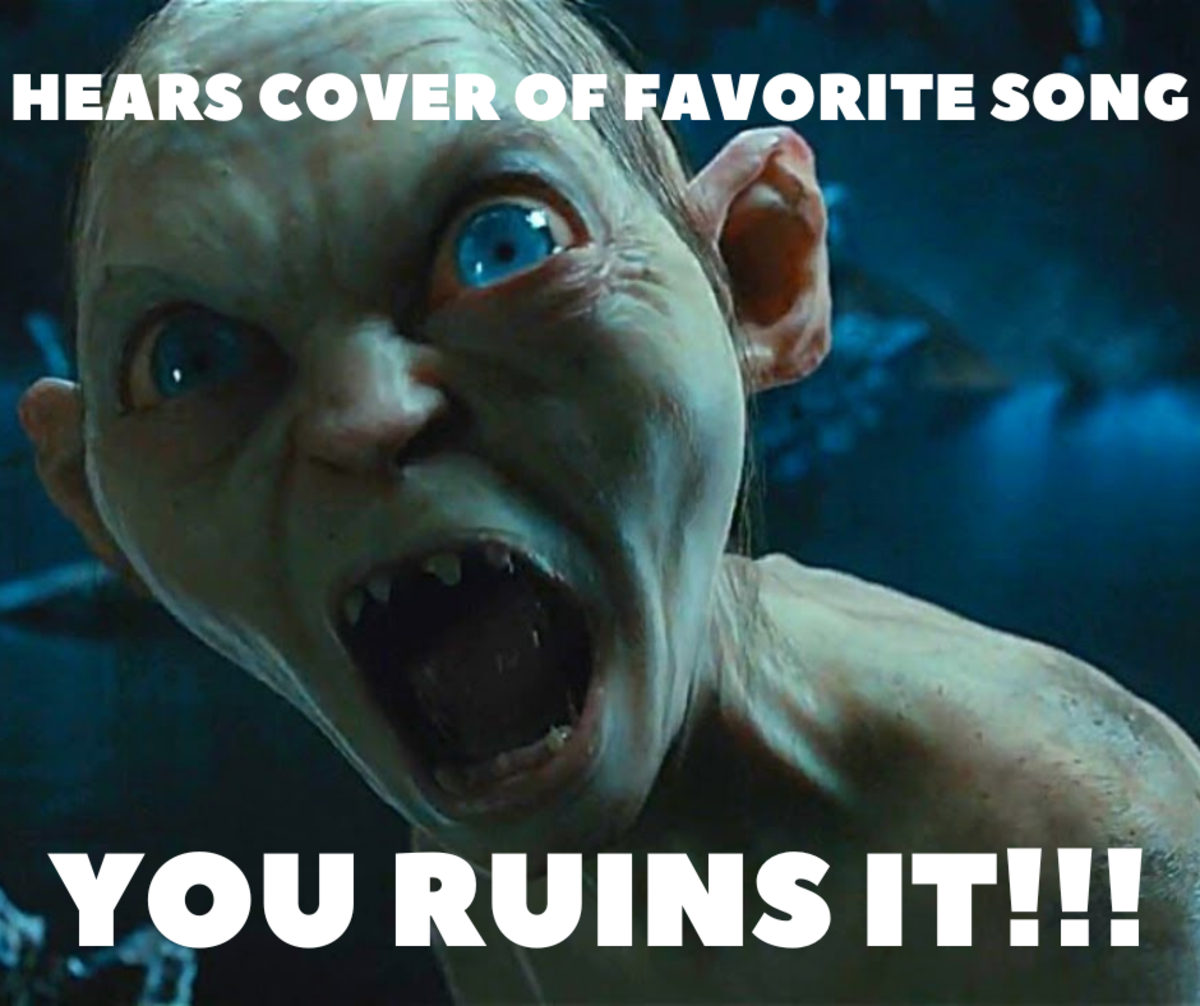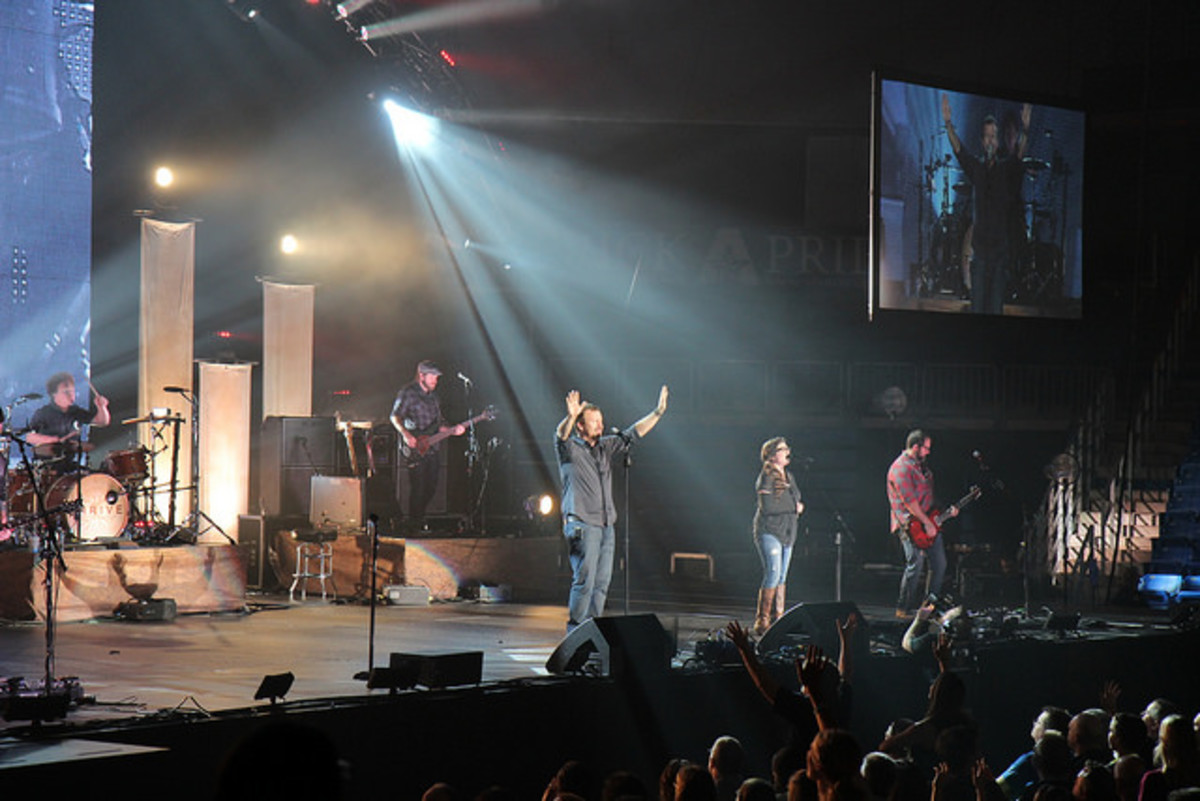The Four Seasons by Vivaldi
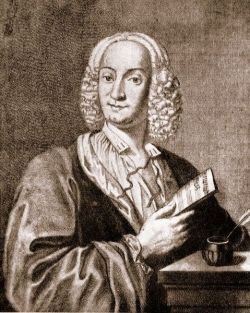
Vivaldi's Four Seasons : A Rediscovered Masterpiece
It's an extraordinary fact; the modern world nearly didn't get to hear The Four Seasons by Vivaldi.
Although hugely popular in his time, Antonio Vivaldi's work fell out of fashion after his death in 1741. For nearly 200 years his manuscripts lay forgotten, his music unplayed.
Just eighty years ago his manuscripts were re-discovered, and amongst them was the collection of concertos known as The Four Seasons.
Since then it has become some of the most played and recorded music in the world. There can be few who haven't heard some part of the Four Seasons, even if they don't know its name; the Four Seasons, after a long silence has become embedded in our cultural consciousness.
How The Four Seasons came to be lost and found again is an amazing story, well worth the telling, so here it is now, with some recordings to listen to. I hope you enjoy the tale and the music.
The images in this work are licensed under a Creative Commons Attribution-ShareAlike 3.0 Unported License.
Vivaldi's Winter Concerto - The bit most people will have heard at sometime, somewhere...
This is one of the most performed, broadcast and recorded pieces of classical music in the world. It gets used in commercials, background music and intros everywhere. Because it is so ubiquitous, it's easy to overlook how very beautiful it is.
'Winter' comes in 3 parts, and it is the theme from second movement that is best known, which means that the equally beautiful other 2 movements are less well known.
Vivaldi's Winter Concerto: 2nd Movement
Amazon MP3 Store - Digital Music Format
This now famous piece is written to create the feeling and images of a snowy sleigh ride. The tune is sweet and uplifting, played by a single violin to a gentle, pizzicato accompaniment that mimics the rhythm of horses trotting.
Listen or Buy A Download of Vivaldi's Winter Concerto Theme Here:
From Fame to Oblivion to Fame Again
How The Four Seasons was lost and found again
When Antonio Vivaldi died, his work had fallen out of favour. After his death any surviving copies of his vast body of work were in the hands of private collectors and his music was unplayed and neglected.
In 1926, a short of funds boarding school in Piedmont put up a collection of manuscripts for sale. Amongst them was an almost complete collection of Vivaldi's manuscripts. Fortunately the importance of this find was recognised by the Museum of Turin, and the works were purchased in their entirety.
In 1939, on the eve of the second world war, the rediscovery of this great Baroque master was marked in Sienna by a festival devoted to Vivaldi, where his works were promoted and performed publicly for the first time since his death in 1741.
In the austere days of 1951, with the country still suffering from rationing following the war, London held the Festival of Britain on the South bank of the River Thames. Amongst the many events staged was a season of Baroque music almost entirely devoted to the newly found works of Antonio Vivaldi.
And so the works of Vivaldi were rediscovered, and the Four Seasons began it's journey into the popular consciousness again after 200 years of obscurity.
So What Is Vivaldi's 'Four Seasons' ?
Put very simply, the Four Seasons is four separate musical pieces for a solo violinist and orchestra. It portrays the different weather, sounds, activities and fatmosphere of the four seasons; Spring, Summer, Autumn and Winter.
Although they are four separate pieces of music, and each one is complete in itself, they are designed to be performed together.
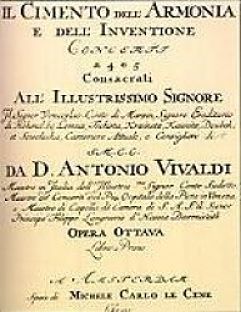
The Four Seasons Are A Very Early Example Of 'Programme Music'
The four concertos were written in Venice, and first published in 1725, entitled Il Cimento Dell'armonia e Dell'inventione or The Contest between Harmony and Invention.
Vivaldi was a ground breaking composer in that within The Four Seasons, the four concertos, Spring, Summer, Autumn and Winter are all very early example of Programme Music, whereby the music reflects and even imitates specific ideas, themes, feelings and events.
Each of the concertos reflect a season, and more specifically the kind of weather and activities that Vivaldi would have experienced living in Venice in the 18th century. There is the awakening of spring flowers, birds singing, torrential rain, blistering heat, summer storms and lightening, peasants dancing as they harvest their crops, and the icy grip of winter and sleigh rides...all portrayed in some of the most beautiful music ever written.
This magical music not only paints exquisite pictures in our minds, but also gives opportunities for solo virtuosos to vie with each other by performing thrilling extemporisations, and for chamber orchestras to engage in tour de force ensemble playing. However many times this music is heard, the listener is filled with wonder time and again at the genius of this man; Antonio Vivaldi.The image above shows the title page of The Four Seasons By Antonio Vivaldi [Public domain], via Wikimedia Commons
Vivaldi's Venice - Little changed since The Four Seasons was composed, nearly 300 years ago.
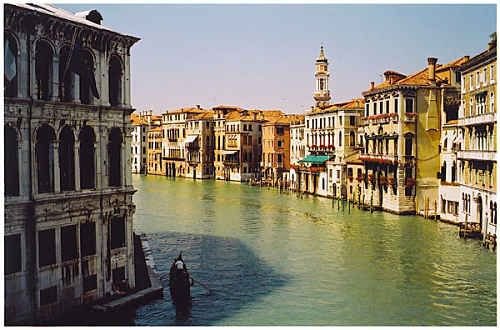
Something you need to bear in mind when listening to the Four Seasons, is that Vivaldi was describing in music, the weather and events of 18th century Venice. So his musical descriptions of thunder laden, oppressive summer heat, and ice frozen winters may not match everyone's experience.
In fact these descriptive music pieces provide an unintentional and fascinating historical record of the climate around that part of the Mediterranean at that time.
A Bit More Detail On The Structure Of The Four Seasons
Each of the Four Seasons are composed in the form of a concerto. So there is a Spring Concerto, a Summer Concerto, an Autumn Concerto and a Winter Concerto.
Each of these concertos contain three pieces of music, known as movements. So in total, Vivaldi's Four Seasons is made up of 12 pieces of music.
The three movements in each concerto function as parts of a whole. The first movement acts as an introduction with a main theme or idea. It is followed followed by a contrasting middle movement, usually in a different tempo and or key. The third and concluding movement summarises everything and often ends in a grand flourish.
Vivaldi is no slouch when it comes to drama, grand flourishes...but more of that in a bit...
How Should The Four Seasons Be Played?
When Vivaldi wrote these pieces it was common practice for the soloist to extemporise at some point in each concerto, rather like a lead guitarist in a rock band does today. As Vivaldi was a violin virtuoso himself, he created ample opportunities for both soloists and the orchestra to show off their talents.
When the music was rediscovered and first recorded in the 20th century, music scholars were only just beginning to research the manner in which 18th century music was played and interpreted. An incomplete understanding and a reverence for a particular concept of the past, led to rather stilted and dull performances, as the manuscripts were read and played note for note exactly, without much invention or passion.
As our understanding has grown about the level of flexibility and invention that was practiced at that time, conductors, soloists and orchestra have increasingly stamped their own interpretation, style, tempo and extemporisations on the work, leading to the current plethora of interpretations.
At a concert that I attended at St. Martin in the Fields once, the soloist brought the most chilling, spooky and beautiful sounds from her violin during the Winter concerto solo that made the hairs on the back of my neck stand up. I loved it, but a traditionalist with me didn't. It is just a matter of taste.
My Three Recomended Recordings Of The Four Seasons
Vivaldi: The Four Seasons [Original Recording Remastered] - One of the very best recordings ever made of The Four Seasons.
Once hooked on the Four Seasons, people tend to collect different recordings in order to compare and enjoy the contrasting interpretations made by various orchestras, soloists and conductors.
If you are buying your first recording, buy this one. It has been around since 1990, and many think it hasn't been bettered yet. It is performed on instruments authentic to the period, with a beauty and clarity that just stops you in your tracks, stills the mind, and shows exactly what this piece is all about.

Vivaldi: The Four Seasons; Fabio Biondi & Europa Galante - If you like your Vivaldi edgy, full on and remarkable, this is the one for you!
Vivaldi: The Four Seasons; Fabio Biondi & Europa Galante
People are divided about this performance. I love it. It's rivetting and fast paced, pushing the moments of light and dark to quite extreme places.
You really haven't heard The Seasons until you've heard Fabio Biondi and Europa Galante take it on, and take it places you never imagined.

Vivaldi - The Four Seasons - I Musici - Vittorio Negri - Pina Carmirelli - This is a gem of a recording. It won't shock and surprise with furious pace and firew
I really like this recording. There is a purity and sweetness that never gets cloying or heavy.
Pina Carmirelli plays with such grace and elegance; you can feel a sincerity that can only come from a real understanding and love for the piece.
I lam thrilled when I listen to the grandstand firework solos of violinists like Fabio Biondi, but there are times when I need to hear simple grace, and this is where you can hear it.

The Four Season Sonnets
Vivaldi composed the Four Seasons as companion music to four sonnets.There is some debate as to whether Vivaldi wrote the sonnets himself, but whether he did or not, they offer the listener a useful set of programme notes, pointing out the intentions of the composer in each piece.
Each sonnet is included here in both English and the original Italian.
"Springtime is upon us.
The birds celebrate her return with festive song,
and murmuring streams are softly caressed by the breezes.
Thunderstorms, those heralds of Spring,
Roar, casting their dark mantle over heaven,
Then they die away to silence,
And the birds take up their charming songs once more.
On the flower-strewn meadow, with leafy branches rustling overhead,
The goat-herd sleeps, his faithful dog beside him.
Led by the festive sound of rustic bagpipes,
Nymphs and shepherds lightly dance beneath the brilliant canopy of spring." spring sonnet
" La Primavera" : The Spring Concerto : Concerto No. 1 in E major, Op. 8, RV 269
"Giunt' è la Primavera e festosetti
La Salutan gl' Augei con lieto canto,
E i fonti allo Spirar de' Zeffiretti
Con dolce mormorio Scorrono intanto:
Vengon' coprendo l' aer di nero amanto
E Lampi, e tuoni ad annuntiarla eletti
Indi tacendo questi, gl' Augelletti;
Tornan' di nuovo al lor canoro incanto
E quindi sul fiorito ameno prato
Al caro mormorio di fronde e piante
Dorme 'l Caprar col fido can' Ã lato
Di pastoral Zampogna al suon festante
Danzan Ninfe e Pastor nel tetto amato
Di primavera all' apparir brillante."
You Can Listen To The Summer Concerto Here:
This is my favourite concerto. Don't be fooled by the slow start; this is a breathtaking piece about thunderstorms breaking out from languid and oppresive heat.
This particular performance is extremely strenuous and physical; you can see the soloist gleaming with sweat by the end.
Virtuosity and passion like this is very likely the kind of thing that Vivaldi would have approved of.
"Beneath the blazing sun's relentless heat men and flocks are sweltering, pines are scorched.
We hear the cuckoo's voice; then sweet songs of the turtledove and finch are heard.
Soft breezes stir the air but threatening north wind sweeps them suddenly aside.
The shepherd trembles, fearful of violent storm and what may lie ahead.
His limbs are now awakened from their repose
By fear of lightning's flash and thunder's roar,
As gnats and flies buzz furiously around.
Alas, his worst fears were justified,
As the heavens roar and great hailstones beat down
Upon the proudly standing corn." summer sonnet
"L'estate": The Summer Concert: Concerto No. 2 in G minor, Op. 8, RV 315
"Sotto dura Staggion dal Sole accesa
Langue l' huom, langue 'l gregge, ed arde il Pino;
Scioglie il Cucco la Voce, e tosto intesa
Canta la Tortorella e 'l gardelino.
Zeffiro dolce Spira, mà contesa
Muove Borea improviso al Suo vicino;
E piange il Pastorel, perche sospesa
Teme fiera borasca, e 'l suo destino.
Toglie alle membra lasse il Suo riposo
Il timore de' Lampi, e tuoni fieri
E de mosche, e mossoni il Stuol furioso!
Ah che pur troppo i Suo timor Son veri
Tuona e fulmina il Ciel e grandioso
Tronca il capo alle Spiche e a' grani alteri."
"The peasant celebrates with song and dance the harvest safely gathered in.
The cup of Bacchus flows freely, and many find their relief in deep slumber.
The singing and the dancing die away
as cooling breezes fan the pleasant air,
inviting all to sleep
without a care.
The hunters emerge at dawn,
ready for the chase,
with horns and dogs and cries.
Their quarry flees while they give chase.
Terrified and wounded, the prey struggles on,
but, harried, dies." autumn sonnet
" L'autunno" : The Autumn Concert: Concerto No. 3 in F major, Op. 8, RV 293
"Celebra il Vilanel con balli e Canti
Del felice raccolto il bel piacere
E del liquor de Bacco accesi tanti
Finiscono col Sonno il lor godere
FÃ ch' ogn' uno tralasci e balli e canti
L' aria che temperata dà piacere,
E la Staggion ch' invita tanti e tanti
D' un dolcissimo Sonno al bel godere.
I cacciator alla nov' alba à caccia
Con corni, Schioppi, e canni escono fuore
Fugge la belua, e Seguono la traccia;
Già Sbigottita, e lassa al gran rumore
De' Schioppi e canni, ferita minaccia
Languida di fuggir, mà oppressa muore."
"Shivering, frozen mid the frosty snow in biting, stinging winds;
running to and fro to stamp one's icy feet, teeth chattering in the bitter chill.
To rest contentedly beside the hearth, while those outside are drenched by pouring rain.
We tread the icy path slowly and cautiously, for fear of tripping and falling.
Then turn abruptly, slip, crash on the ground and, rising, hasten on across the ice lest it cracks up.
We feel the chill north winds coarse through the home despite the locked and bolted doors
This is winter, which nonetheless brings its own delights." winter sonnet
"L'inverno" : The Winter Concerto: Concerto No. 4 in F minor, Op. 8, RV 297
"Aggiacciato tremar trà neri algenti
Al Severo Spirar d' orrido Vento,
Correr battendo i piedi ogni momento;
E pel Soverchio gel batter i denti,
Passar al foco i di quieti e contenti
Mentre la pioggia fuor bagna ben cento
Caminar Sopra 'l giaccio, e à passo lento
Per timor di cader gersene intenti;
Gir forte Sdruzziolar, cader à terra
Di nuove ir Sopra 'l giaccio e correr forte
Sin ch' il giaccio si rompe, e si disserra;
Sentir uscir dalle ferrate porte
Sirocco Borea, e tutti i Venti in guerra
Quest' é 'l verno, mà tal, che gioja apporte."
How Do You Like Your 'Four Seasons' Played? - The possibilities are many. Here are a few samples of the different ways the work can sound:
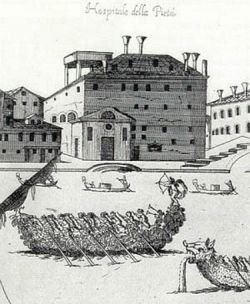
This is The School Where Vivaldi Worked And Wrote Most of His Music
Including The Four Seasons
Vivaldi was a virtuoso violinist, and held the post of violin master and music director at the hospital and orphanage known as the The Ospedale della Pieta throughout most of his working life for nearly forty years between 1703 and 1740. During this time he also managed to travel far, and compose for nobles and popes...the school must have valued him greatly to allow this freedom.
Venetian hospitals had long not only cared for the sick and elderly, but also acted as orphanages for illegitimate children, and provided training in trades for those in its care.
However, it became common practice for the illegitimate daughters of aristocratic families to be lodged there also, leading to very generous funding. Thus the Hospitals became extremely lavish, and came to function as the most important centres of musical excellence in Europe at that time.
If you go to Venice, one of the most magical experiences is to attend a performance of The Four Seasons in that same room.
Image of The Ospedale della Pieta at wikipedia.org
A Typical Concert At A Hospital Academy In Vivaldi's Time
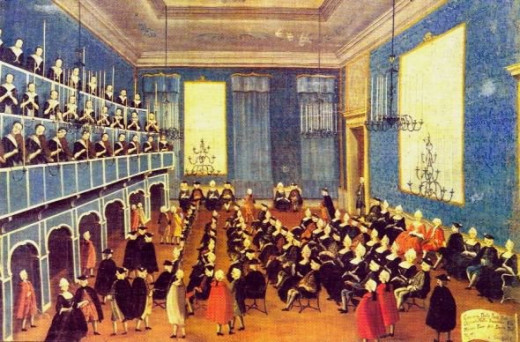
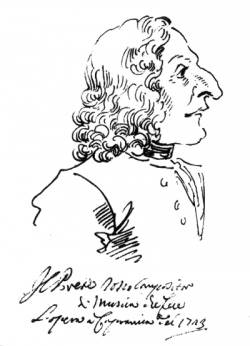
Who Was Antonio Vivaldi
And what was he like?
"Antonio Vivaldi was born in Venice on March 4th, 1678. Though ordained a priest in 1703, according to his own account, within a year of being ordained Vivaldi no longer wished to celebrate mass.........."read the full article here
A caricature of Vivaldi 'Il prete rosso' (The Red Priest) by Pier Leone Ghezzi (1723)
